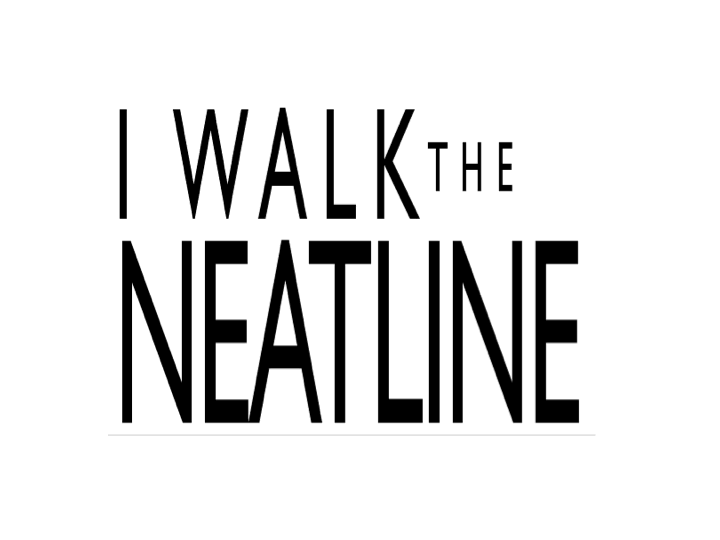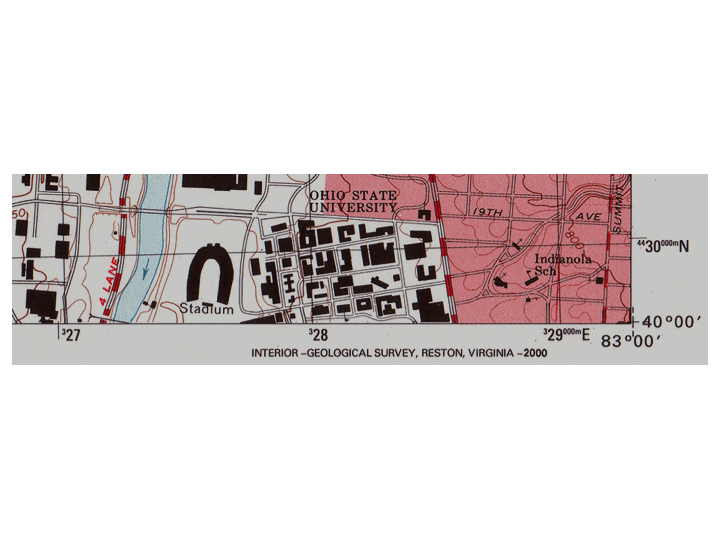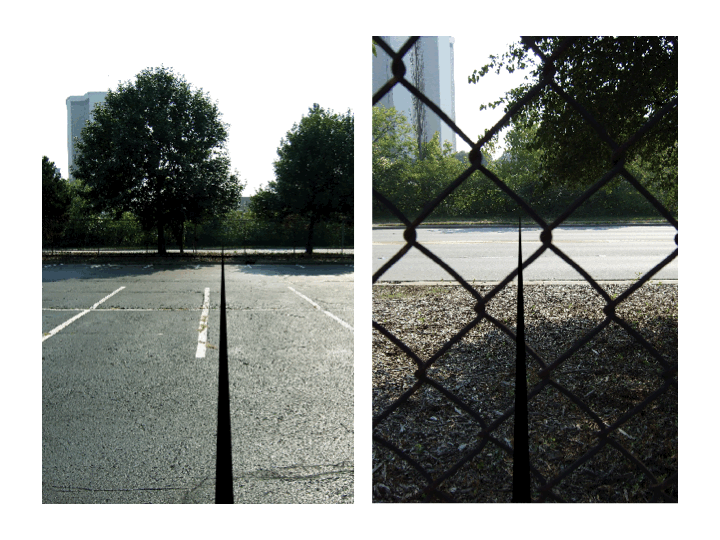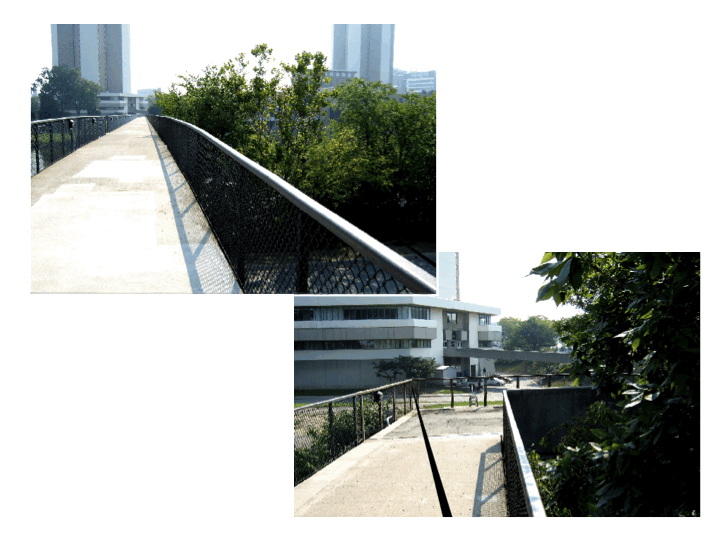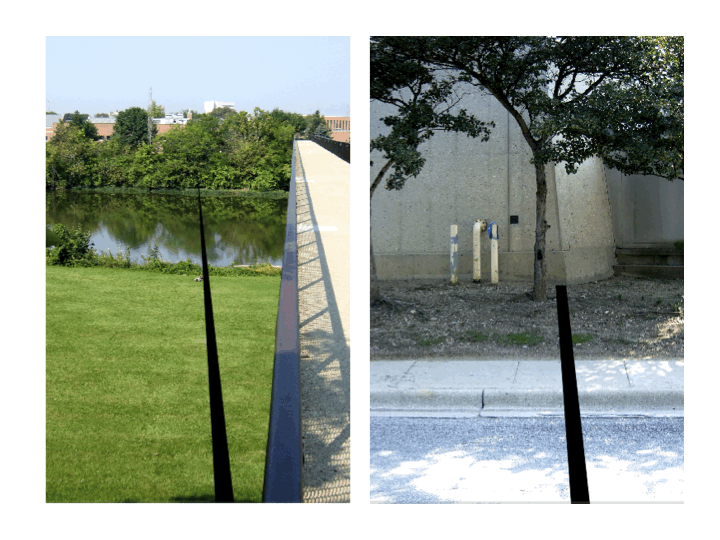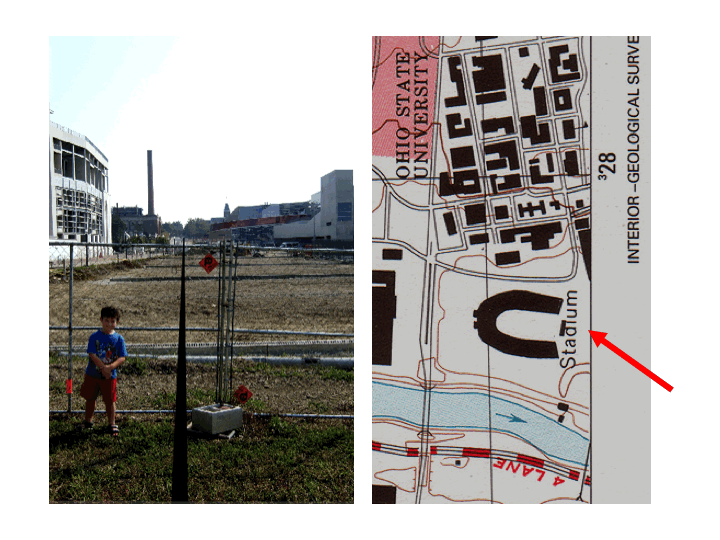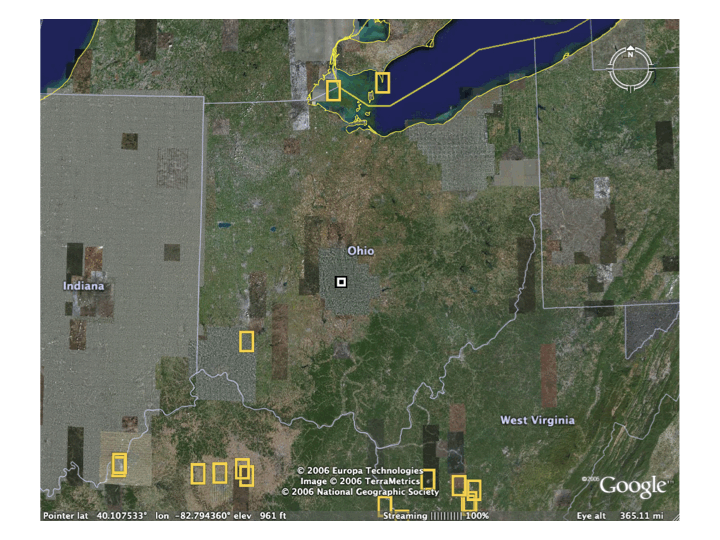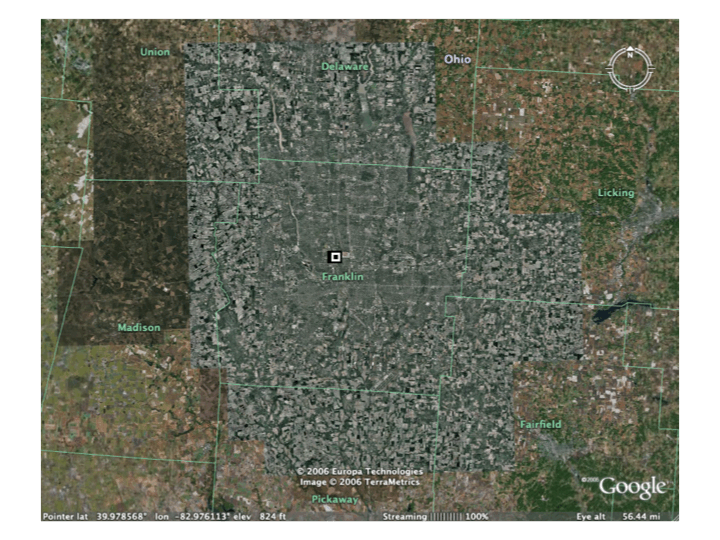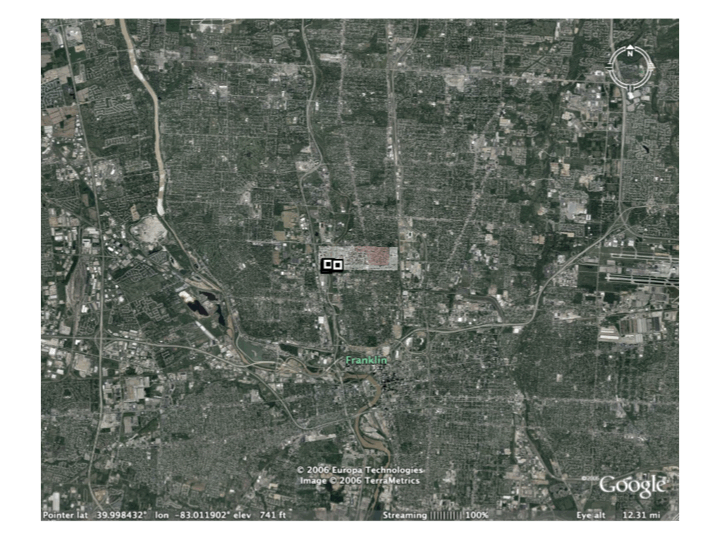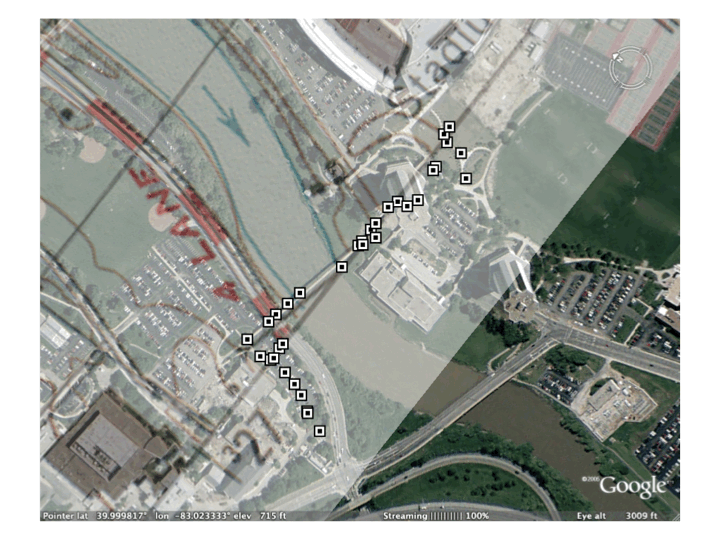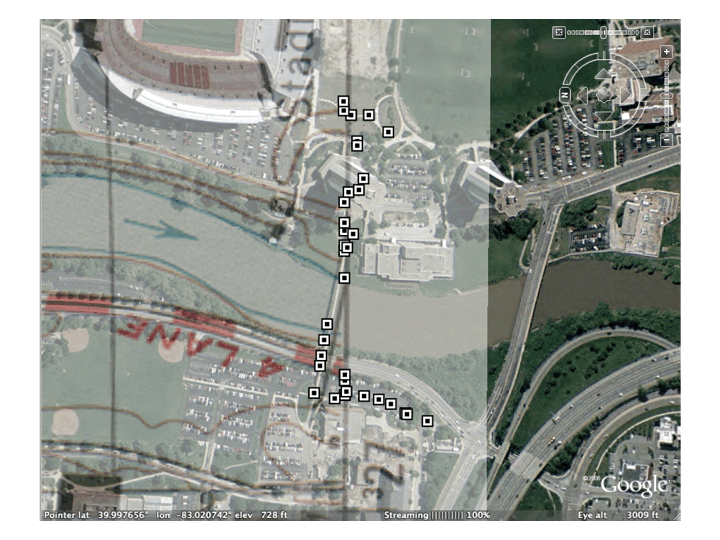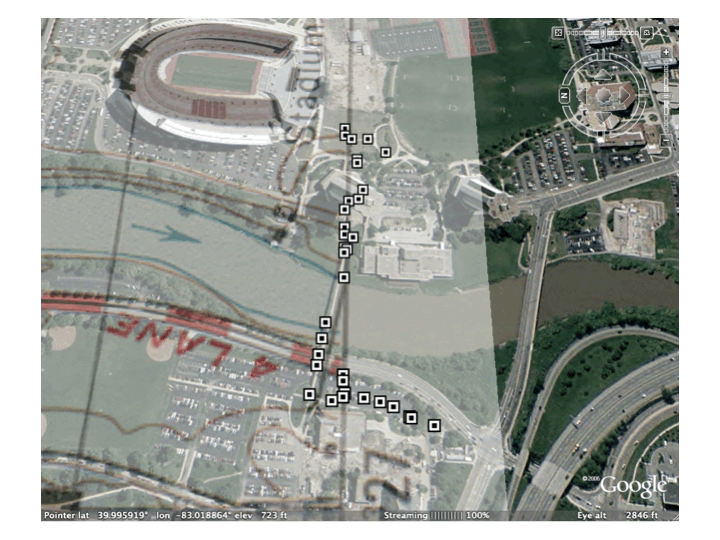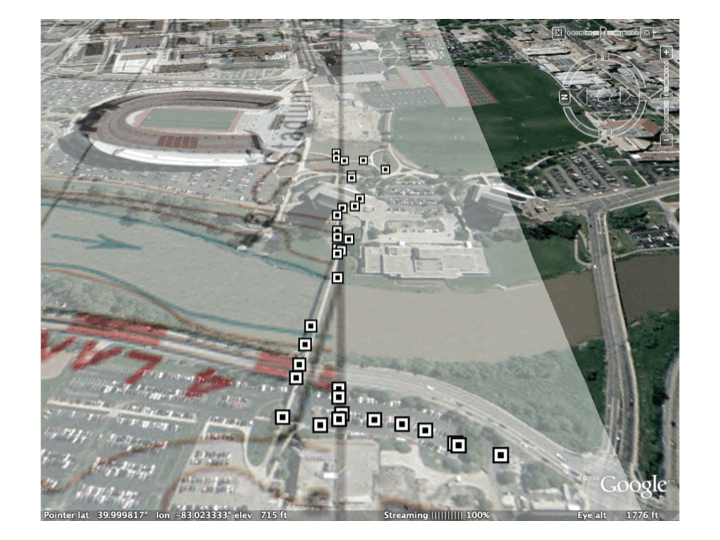Geography 222 The Power of Maps and GIS
...to Geog 222 Main Page and Course Description
...to Geog 222 Syllabus
...to Geog 222 Course Schedule and Lecture Outlines
...to Geog 222 Exercises
Geog 222 Lecture Outline: Mental Maps & PsychoGeographies
Update: 9/1/18
1. Mental Maps & PsychoGeographies
Learning the world around us starts when we are very young and continues
throughout our lives
- Process of: sensory data >> abstraction / categories >> representation /
symbols
Cognitive mapping: gathering of environmental knowledge with all of our senses and
direct experience of the environment
Initially things are understood from an egocentric perspective
- egocentric: self-centered; things in relation to us (we are the center)
Change from an egocentric to a geocentric understanding of environment
- geocentric: orienting ourselves to the external environment
Why does this geocentric mental map develop?
- developmental and cognitive psychology
- cultural/social
As our experience of the environment grows we develop a set of locations in
relation to our home and paths between those locations
What is important is that
- there is some kind of map in our heads
- and it is based on direct experience, egocentrism, and locations and paths
We still use this basic process of mental mapping when in unfamiliar places
Our mental maps seldom stay simple
- larger areas are incorporated as we travel (more direct experience)
- we begin to annotate our direct experience with indirect experience
Our mental maps - whether inborn or culturally determined - is enhanced by the
use of an established spatial frame of reference which we learn from and can use
with other people
Mental maps are not like printed paper maps with accurate directions and distances
- P. Muehrcke: "As adults our mental maps are a potpourri of fact and fiction,
gleaned through a haphazard combination of direct and indirect, and extrasensory
experience. Some aspects of it are egocentric and based on connected paths,
while other bits are geocentric and based on Euclidean distance-direction
relations. We have forgotten some things and seen others incorrectly. Our fears
and prejudices and longings have biased our way of looking at the world. It is
understandable that a combination of these factors may badly warp our image of
the environment." p. 8
BUT...despite this mental maps often work just fine, no matter how warped they are
Geographical biases: what you know depends on where you live


- Transcriptions of Mental Maps: Geocentric maps
Kevin Lynch Image of the City (1960): putting mental maps to work:
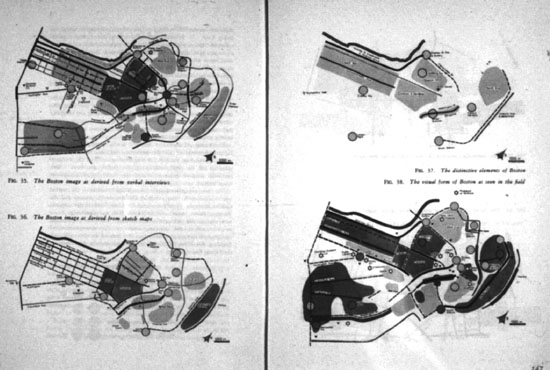
- develop a notation for drawing mental maps (what people emphasize)
- how to use such maps in planning
Lynch mental map elements
- Landmarks: prominent points of interest

- Pathways: paths, streets, etc.

- Districts: downtown, dorms, etc.

- Nodes: meeting places, centers where pathways cross

- Edges: breaks on the map between districts

Some other applications of mental mapping... fear & emotion:
David Ley (1972): Fear & Stress in an Urban (Philadelphia) Neighborhood:
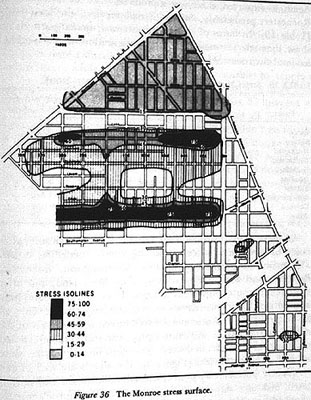
Christian Nold (2004-present)
- Bio Mapping: GPS + GSR: The Bio Mapping tool allows the wearer to
record their Galvanic Skin Response (GSR), which is a simple indicator of
emotional arousal in conjunction with their geographical location. This can
be used to plot a map that highlights point of high and low arousal. By
sharing this data we can construct maps that visualise where we as a
community feel stressed and excited.
- BioMapping.net
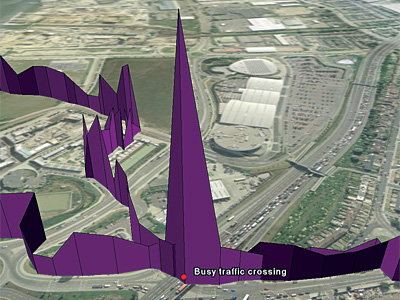
2. Mapping PsychoGeographies
PsychoGeography: Guy Debord:
"the study of the precise laws and specific effects of the geographical environment,
consciously organized or not, on the emotions and behavior of individuals."
PsychoGeography is...
- diverse and broadly defined practices, in general focused on any method or
activity that makes you more aware - using all your senses - of places you are walking through.
- typically focused on cities, but can take place anywhere
- role of the human body & senses (last lecture) as data collection device: Wood: LynchDebord article
- derive: aimless, random drifting through a place, guided by whim and an awareness
of how different spaces draw you in or repel you.
- "to derive was to notice the way in which certain areas, streets, or
buildings resonate with states of mind, inclinations, and desires, and to seek out
reasons for movement other than those for which an environment was designed. It was
very much a matter of using an environment for one's own ends, seeking not only the
marvellous beloved by surrealism but bringing an inverted perspective to bear on the
entirety of the spectacular world." Sadie Plant, The Most Radical Gesture.
- Derive
- "One or more persons committed to the derive abandon, for an undefined period of
time, the motives generally admitted for action and movement, their relations, their
labor and leisure activities, abandoning themselves to the attractions of the terrain
and the encounters proper to it." McDonough, "Situationist Space."
- Important: we are so tuned out, focused on getting through places for practical
reasons (get to class, to work, etc.) that we don't pay attention to places and the
way all our senses can be used to know these places.
- "forced" derive: "Unfold a street map... place a glass, rim down, anywhere on the
map, and draw round its edge. Pick up the map, go out in the city, and walk the circle,
keeping as close as you can to the curve. Record the experience as you go, in whatever
medium you favour." Robert MacFarlane, "Psychogeography: a beginner's guide"
- Mapping Weird Stuff

- Atlas of Boylan Heights
- Google "PsychoGeography Maps"
- Geography 222 Fall 2008 Psycho-Sensory Projects
- Geography 222 Spring 2010 Psycho-Sensory Projects
- Geography 222 Fall 2010 Psycho-Sensory Projects
3. Mapping PsychoGeographies
E-mail: jbkrygier@owu.edu
...to Geog 222 Main Page and Course Description
...to krygier teaching page.
...to krygier top page.
OWU Home
OWU Geology and Geography Home












